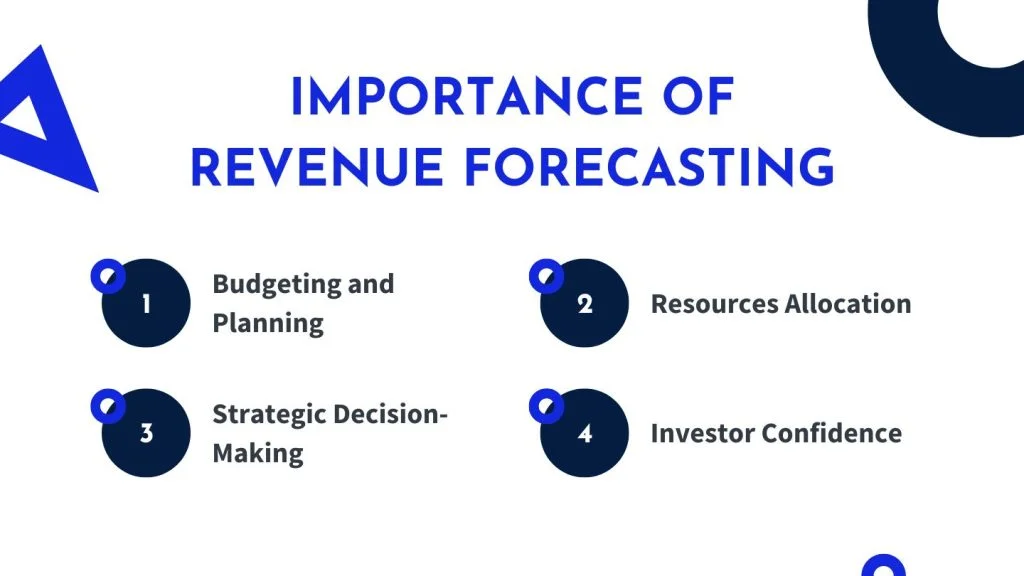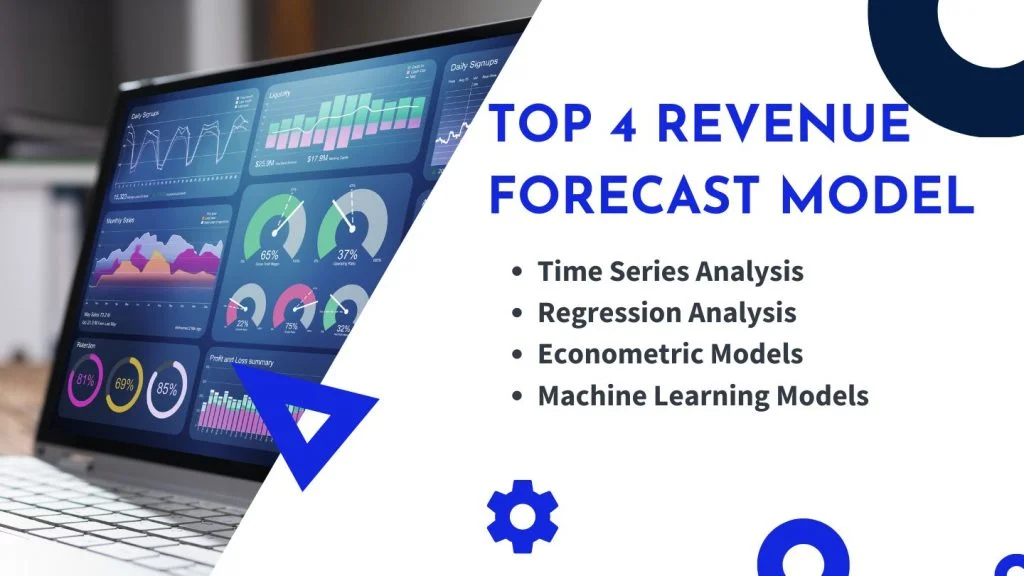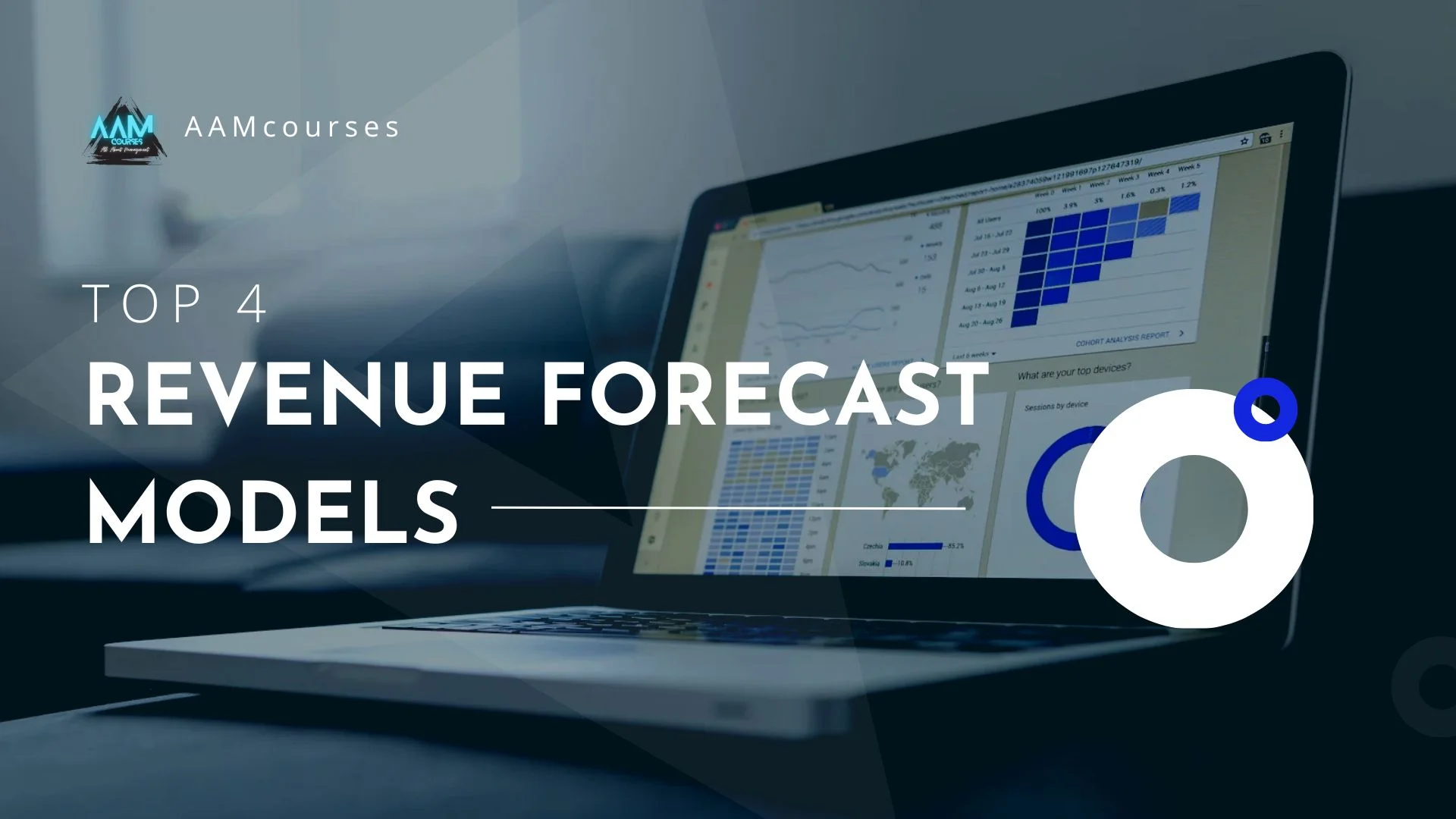Revenue forecast models are a crucial part of business, and they help the company plan and develop strategies. A revenue forecast model aids the business in predicting future sales and revenue. Once these predictions are stated, it becomes easier to strategize and plan several aspects, such as budgeting, resource allocation, and future decision-making. In this article, we will dive deep into various aspects of revenue forecast models, their types, benefits, methods, and practical applications.
What is Revenue Forecasting?
Revenue forecasting is the process of predicting future sales and business revenue. Revenue forecasting entails a lot of data analysis, which includes past performance, current market trends, and several other internal and external factors. An accurate revenue forecast can help the business make more strategic decisions and minimize risk.
ALSO READ: What is Predictive Modelling? Its Process, 5 Important Models, and 7 Techniques
Importance of Revenue Forecasting

Budgeting and Planning
A precise sales and revenue forecast can be beneficial for businesses in making informed decisions in financial planning. It helps in creating a budget, which involves predicting future expenditures, investment options, and other operational expenses.
Resources Allocation
When a company knows how much revenue it can generate in future, it makes it easier for them to decide how they are going to allocate these funds as per the budget. It helps the company to ensure that every department is funded appropriately and based on their needs.
Strategic Decision-Making
One of the advantages of revenue forecasting is that it helps the business in future decision-making. Revenue forecasting provides insights into market potential and threats, which allows the company to make a strategy to take advantage of that potential and mitigate the risks from threats.
Investor Confidence
When investors are aware of potential revenue to be generated, it creates confidence in investors that the company has confidence in themselves and has a sound financial outlook.
Types of Revenue Forecast Models
Qualitative Models
Qualitative models use market research and expert opinions to gather data. Qualitative models are very reliable when quantitative data, such as historical data, is not available for some reason, such as a new market or failed market.
Quantitive Models
Quantitative models use numerical data such as historical data and mathematical techniques for input for the prediction process. Econometric models, Regression analysis, and time series analysis are some examples of quantitative models.
Top 4 Revenue Forecast Model

Time Series Analysis
Time series analysis is one of the quantitative revenue forecast models, Which means it uses historical data to project future revenue. Time series analysis evaluates historical data and assumes that these past patterns and trends will continue in the future. There are 5 techniques used in time series analysis, they are :
- The Moving Average Method: The moving average method takes the average of revenue over a certain period of time and creates a fluctuation chart to reflect upcoming trends.
- Exponential Smoothing: This method assumes that the current data is more important and gives more weight to current data than historical data while making a prediction.
- Autoregressive Integrated Moving Average (ARIMA): ARIMA is one of the more popular time series analysis models that use autoregression (AR), Differentiation (I), and Moving Average (MA) to generate predictions.
- Seasonal ARIMA (SARIMA): SARIMA is an advanced version of ARIMA, which has an added factor of seasonal term to ARIMA.
- Decomposition Method: The last time series method is the decomposition method. This method divides the time series method into 3 parts – Seasons, Residual components, and trends.
Regression Analysis
Regression analysis is a method that evaluates the relationship between revenue, which is a dependent variable, with one or more independent variables. Regression analysis helps to identify independent variables that can impact future revenue and then use those to predict future revenue generation. There are 4 types of regression analysis models, they are :
- Simple Linear Regression: This revenue forecast model considers the relations between 2 variables; one is an independent variable, and the other is the dependent variable, i.e. revenue.
- Multiple Linear Regression: Multiple linear regression model studies the relationship between revenue and 2 or more independent variables. This method is used for more complex data processing.
- Polynomial Regression: This revenue forecast model studies the relationship between revenue and independent variables as the nth-degree polynomial.
- Logistic Regression: This model uses the data from a set of specific classes. Logistic regression is used when the data belongs to a particular category.
Econometric Models
The econometric model uses economic indicators with statistical methods to predict future revenue. While using this model, analysts utilize economic factors such as growth rate, inflation, GDP, and consumer PPP to forecast future revenue.
Machine Learning Models
Machine learning models are one of the advanced revenue forecast models that use machine learning algorithms to analyze enormous datasets and recognize trends and patterns. These models can handle highly complex datasets and relationships between variables accurately.
- Random Forest: In the random forest method, the model constructs a large sum of decision trees and analyses the best outcome by aggregating their predictions to improve accuracy.
- Neural Networks: A neural network consists of several nodes connected. This model is used for image recognition, language processing, and more.
- Support Vector Machine: This is a supervised revenue forecast model that is used to separate datasets of different classes.
7 Steps to Build a Revenue Forecast Model

Data Collection
To build a revenue forecast model, we must first secure the company’s historical revenue data along with relevant external data that can be considered influential. The external data includes market conditions, competitors’ dominance over the market, economic indicators, and current trends.
Data Preprocessing
Once all the data is gathered, it’s time to clean the data and filter the needed dataset. We also have to ensure that we search for the missing data and keep an eye out for outliers.
Model Selection
Now that we have the required data available, it is time to select a revenue forecast model based on the dataset available.
Model Training
To make sure we have more accurate predictions, we must train the model using historical data, adjusting the parameter till we get the correct output.
Model Validation
We have to make sure that the model works accurately. To check this, try the model out with different historical datasets and check if the results are replicated.
Forecast Generation
Once the revenue forecast model has been tested, it is time to use the model to generate revenue prediction for your company’s current period.
Evaluation and Adjustment
Now that your model is ready to be used on a regular basis, it is time to input new data in the model at regular intervals to forecast revenue generation as the market changes.
Applications of Revenue Forecast Model
- Sales Planning: A revenue forecast model can help companies make strategies based on the generated forecast.
- Inventory Management: With the help of a revenue forecast model, businesses can be aware of future demand and sales. This helps the business to manage its inventory more effectively.
- Cash Flow Management: Once the company is aware of future revenue, it can pre-plan the cash inflow and outflow management.
- Financial Reporting: With the help of revenue forecast models, companies can provide revenue projections for financial statements and investor presentations.
- Marketing Strategy: This model can help the business forecast the revenue generated based on the results of their marketing strategies.
Challenges Faced While Forecasting Revenue
- Data Accuracy: Inaccurate or missing data can lead to inaccurate predictions.
- Market Volatility: Once the data has been fed into the model, it cannot predict the new changes in market conditions. This can lead to unreliable results.
- Model Complexity: Advanced and complex revenue forecast models require field experts and computational resources.
- Bias: The personal bias of the handler can alter the objectivity and lead to wrong results.
ALSO READ: The Most Important 3 Types of Analytics in Business You Should Learn
FAQs
What is the best method to forecast revenue?
There are various methods used to forecast revenue; each technique has its different advantages and uses different datasets. Here are the Top 5 methods to forecast revenue are:
1. Time series analysis
2. Regression analysis
3. Econometric analysis
4. Machine Learning models
5. Hybrid models.
What are the models of financial forecasting revenue?
There are 4 most popular revenue forecast models, they are :
Time Series Analysis
Regression Analysis
Econometric Models
Machine learning models
What is a revenue forecast model?
A revenue forecast model is an analytical technique used to predict future revenue generation using inputs like economic indicators, historical data, and other internal and external factors.
Final Statement
Revenue forecasting is one of the essential tools for business to grow. With the use of various revenue forecast models, companies can be prepared for future conditions by pre-planning for them. The most crucial factors in a revenue forecast model are the accuracy of the data, regular updates of the data and market conditions. By following the steps given in this article, you can ensure that your revenue forecasting model will work flawlessly.
I hope this article about revenue forecast models is helpful! If you have any questions or suggestions, let me know in the comments.

